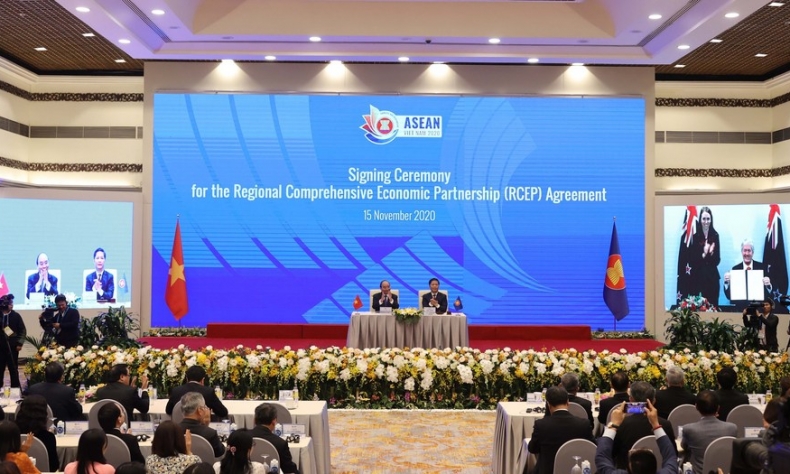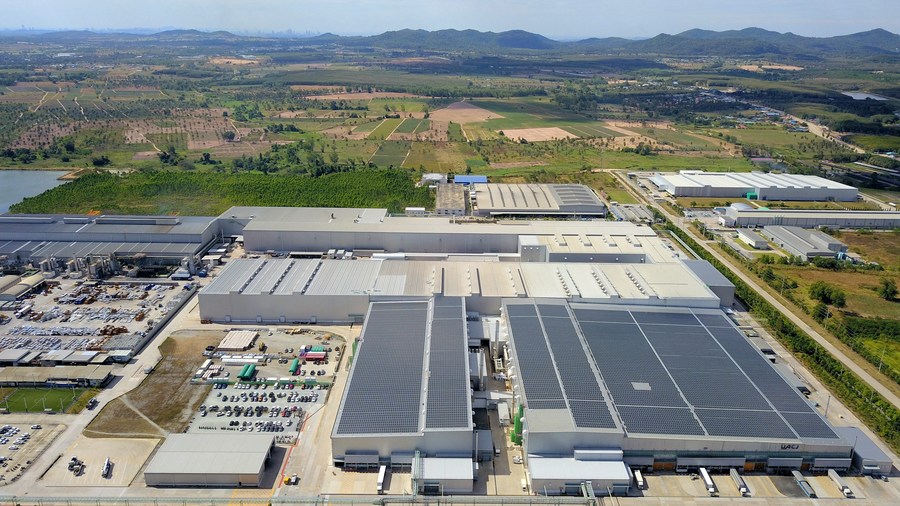RCEP: One Year On

Though in effect for only one year, the regional trade agreement among 15 Asia-Pacific nations has become a strong driving force for economic cooperation among its signatories.
After eight years of negotiations, the Regional Comprehensive Economic Partnership (RCEP), a free trade agreement among 15 Asia-Pacific nations, entered into force on January 1, 2022. Being the largest trade bloc in history, it is exerting increasingly greater impact on trade, economic growth, and the stability of supply chains in both member countries and the world at large. Its operation provides experience and reference for boosting free trade and investment.
The creation of RCEP was the result of changes in the global economic situation over the past decade. Back in 2012, the world economy was still grappling with the debilitating effect of the financial crisis in Europe and the U.S.; reform of the WTO encountered a headwind and failure of the Doha round of trade negotiations held back progress in free trade and investment worldwide; and a resurgent of trade protectionism happened in many countries. During that time, however, economic cooperation among East Asian countries, Australia, and New Zealand was growing.
These Asian-Pacific nations constitute one of the most vibrant economic regions in the world. The 15 members of RCEP account for about 30 percent of the global GDP and trade volume, higher than the share of the United States-Mexico-Canada Agreement and that of the European Union. Growing economic relationship among these Asian-Pacific nations made it necessary to reach a regional free trade agreement. After the global supply chain was severely impacted by the COVID-19 pandemic that started in 2019, regional countries felt they could better cope with this impact through closer cooperation. Among them, China, a manufacturing powerhouse, was quick to put measures in place to combat the pandemic, and lent strong support to global anti-COVID-19 efforts and economic recovery by keeping its complete industrial chain functional. This gave impetus to the signing of RCEP.
Being inclusive and forward-looking, the agreement accommodates the respective realities of member countries. It was first proposed by the Association of Southeast Asian Nations (ASEAN), and received full support from China, the largest economy in the region, as it aligns with China’s foreign policy of fostering an amicable, secure and prosperous neighborhood. China’s support was crucial to the conclusion of this agreement. RCEP covers both developed countries like Japan and Australia and developing countries, such as China and ASEAN members. They are at different socio-economic development stages, and have different concerns. The agreement therefore had to be inclusive.
In addition to explicit stipulations on issues of broad concern, including trade facilitation, trade remedies, and intellectual property rights, RCEP agreed to one rule of origins for all trade in goods. It also proactively responded to new forms of trade by including such provisions as better protection of personal privacy and online shoppers. These will create a more enabling environment for e-commerce.

Though in effect for only one year, RCEP has become a strong driving force for trade among its members. With lower tariffs and greater convenience for imports and exports, these countries have seen accelerated flows of goods, people and capital across their borders. According to customs data, during the first 10 months of 2022, the value of China’s trade with its RCEP partners increased 8.3 percent year-on-year, higher than that with the U.S. The growth rates of China’s trade with Indonesia, Laos, Cambodia, Singapore, and Malaysia all exceeded 20 percent, and that with Myanmar was above 40 percent. It is believed that as businesses of signatory countries put the RCEP rules to better use in the coming years, RCEP will unleash greater potential in boosting regional trade.
RCEP is also helpful for building regional industrial chains featuring complementary advantages and better division of labor. Regional supply chains will grow more resilient. Today, the world economy is facing complicated headwinds amidst soaring energy and mineral prices, and high inflation in Europe and the U.S. By contrast, RCEP economies are in a better shape due to their sound industrial and supply chains. With the opening of large-scale infrastructure projects, including the railway between China and Laos, the connectivity and efficiency of business management have been improving in the region. This has led to a steady reduction in local businesses’ operational costs, which can offset the rising prices of raw materials to some extent and give these companies a competitive edge in the global market.
Chinese companies are benefiting from RCEP. Under this agreement, they can trade with other countries in the region with greater ease. The increasing two-way trading will help with China’s transition from a major manufacturing powerhouse to a major consumer market, make its foreign trade more balanced, expand its opening-up, and improve its business environment.
After one year in operation, RCEP has proven its huge potential and promising prospects. In the coming years, it will further build up the economic cohesion and collective strength of its member countries. With a colossal industrial system and a huge consumer market, China will play a positive role in integrating value chains of regional countries and improving the efficiency in allocating resources in the region. In this way, China will contribute greatly to making RCEP more open, inclusive, and competitive.
Bian Yongzu is executive deputy editor-in-chief of Modernization of Management magazine.
 Facebook
Facebook
 Twitter
Twitter
 Linkedin
Linkedin
 Google +
Google +










